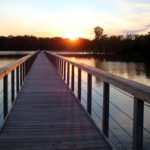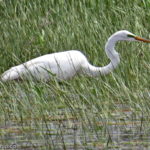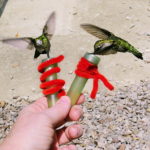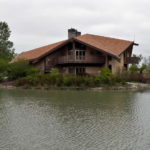The Biggest Week in American Birding is an annual event held in northwestern Ohio. This year it is being held from May 6 to May 15, 2016. Every spring many species of small birds in the warbler family migrate from South America to Canada. In order to store up energy for the flight across Lake Erie, the birds spend some time on the southwestern shore of Lake Erie fattening up on insects. While the birds look for insects, the people look for the birds. We’ve participated in two previous Biggest Weeks toward the tail end of the event. This year we decided to see what it was like at the beginning of the Biggest Week. We joined other birders on the 7th and 8th at Magee Marsh, the Ottawa Wildlife Refuge, and the Toussaint Wildlife Area.
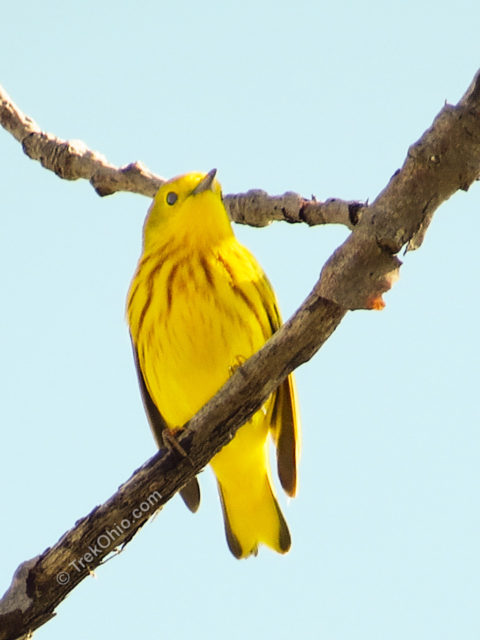
The Boardwalk at Magee Marsh
We had our best luck at spotting birds at Magee Marsh. I confess that I’m not that great a birder outside of this event. For the most part I hear birds singing, but I can’t locate them. Or I spot them, but they just look like dark, little silhouettes. However, one of the advantages to attending the Biggest Week is that the trees are just starting to get leaves, so the visibility is good. The population of birds is dense. And at Magee Marsh, a lot of the trees and shrubs near the boardwalk aren’t that tall, so the birds are nearer to eye level.
If you haven’t been to Magee Marsh, among other things it features a boardwalk that is wheelchair accessible. It was possible to see a lot of birds from the boardwalk. Some people complain that it gets a bit too crowded on the boardwalk, but for novices like us, the crowds help us to locate and identify the birds. In addition, the second day that we stopped by, it was supposed to rain. I think I got about two raindrops on me, but a lot of more prudent people had left before we even made an appearance.
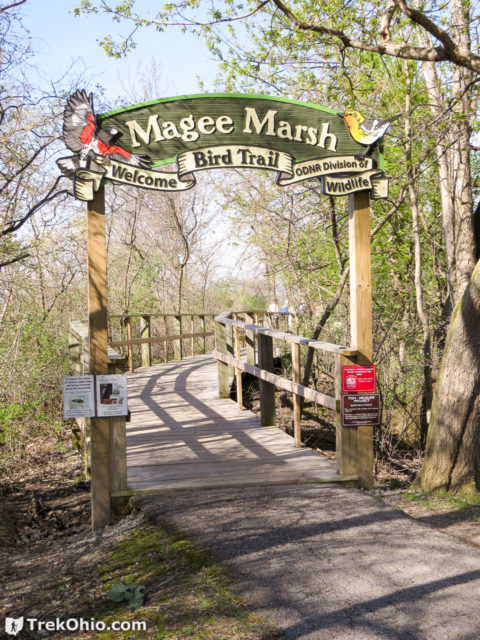
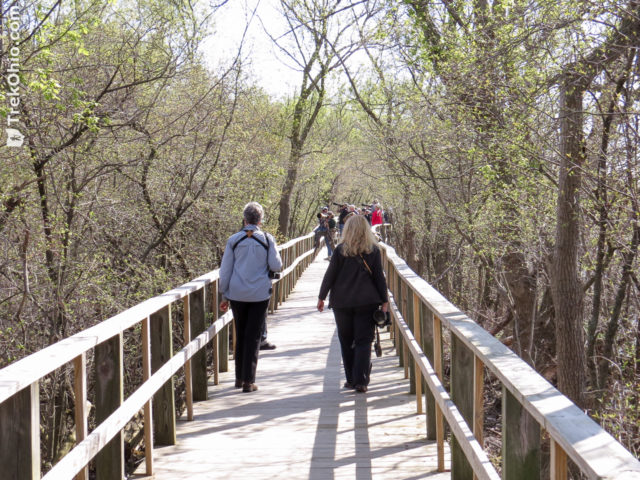
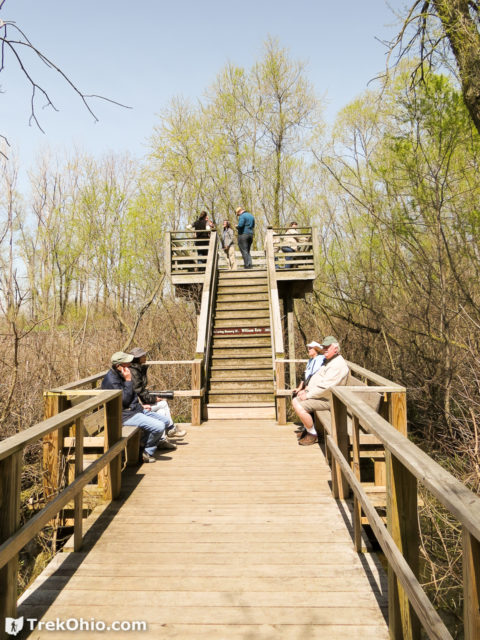
Crane Creek Estuary Trail at Magee Marsh
Every time we go to Magee Marsh we always wander over to the shoreline; I’m still amazed at how large the lake is. While we were looking at the beach, we noticed a sign for the Crane Creek Estuary Trail. It is billed as a “Magee / Ottawa Parntership Trail.”. It is a short trail, just a half mile or so, but we decided to take it. It was a fun excursion, we continued to see birds, and though there were some clumps of birdwatchers in general it seemed more open than the boardwalk.
While at the beach we checked out the birds on the breakers, then took the inland portion of the trail.
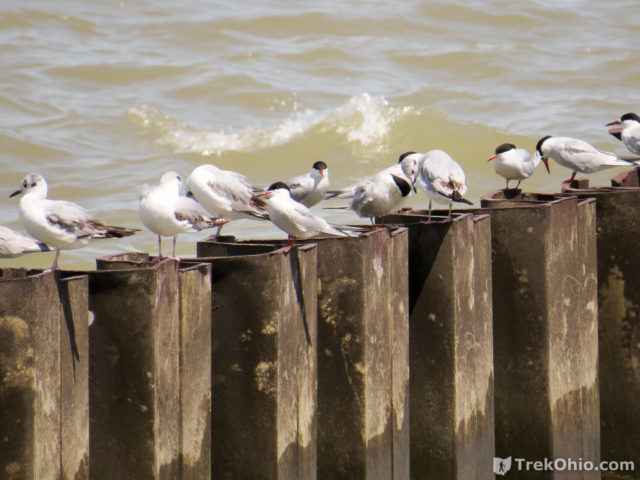
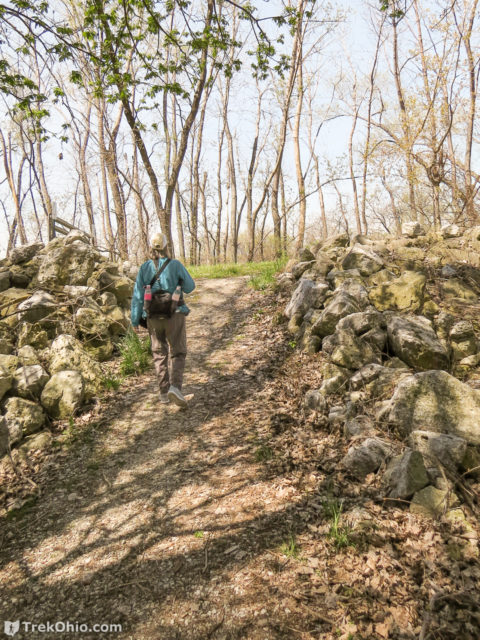
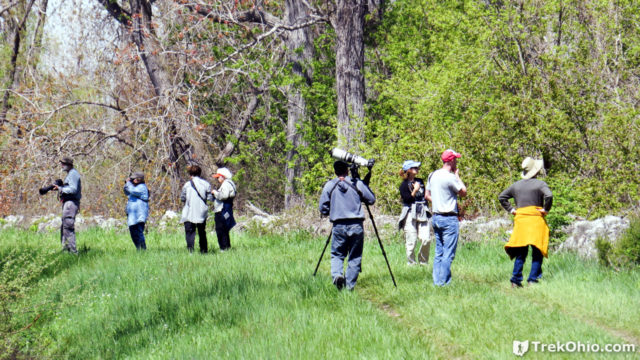
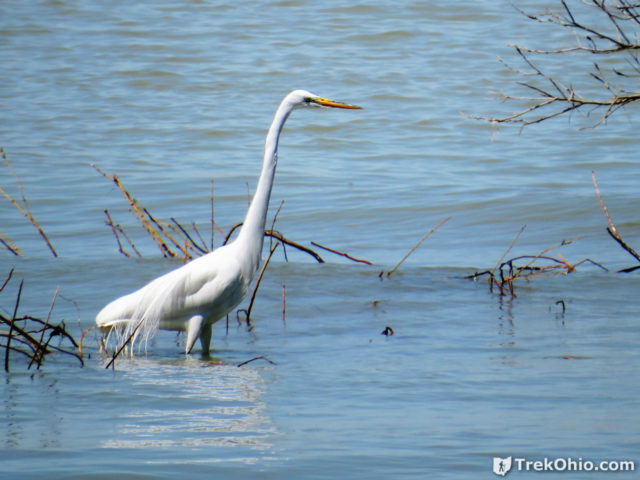
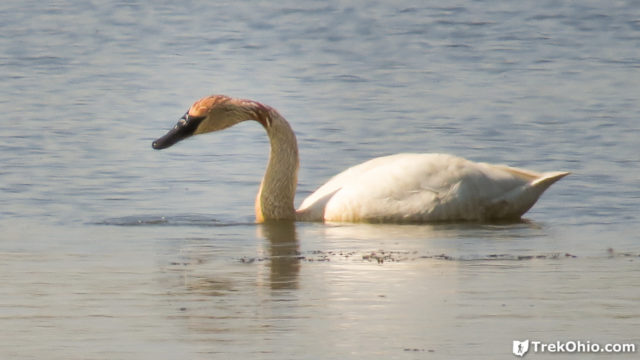
The Warblers
Below I’m going to share a sample of the warblers that we saw at Magee Marsh and elsewhere. All the photos were taken with a point-and-shoot camera (a Canon PowerShot SX50 HS). It was challenging since the little things kept flitting around. I can’t tell you how many photos I ended up with of empty twigs.
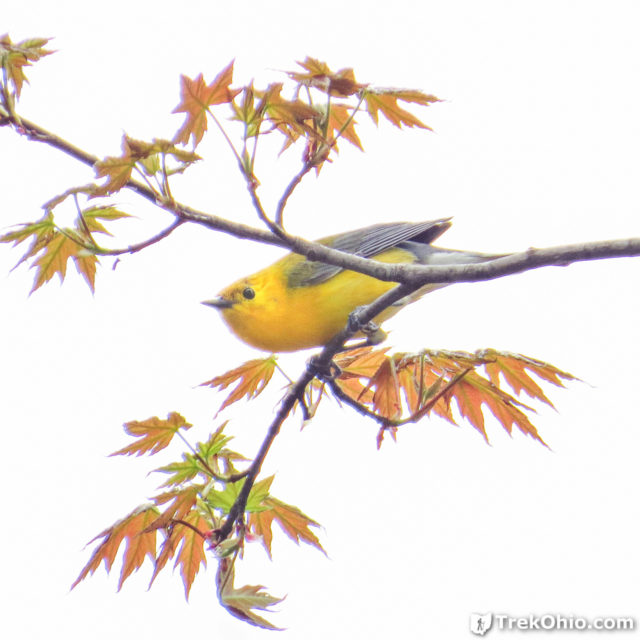
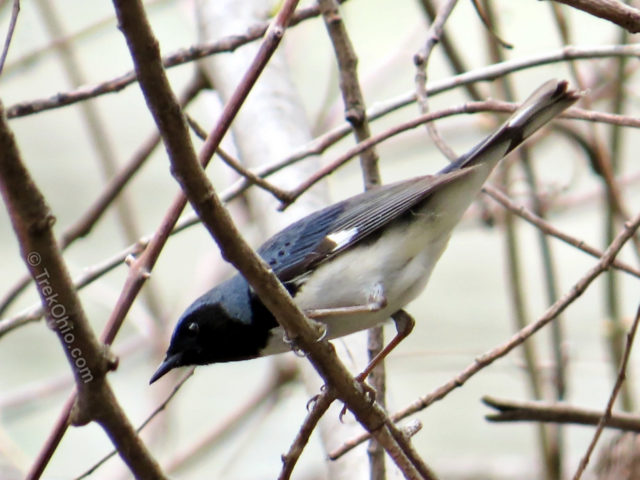
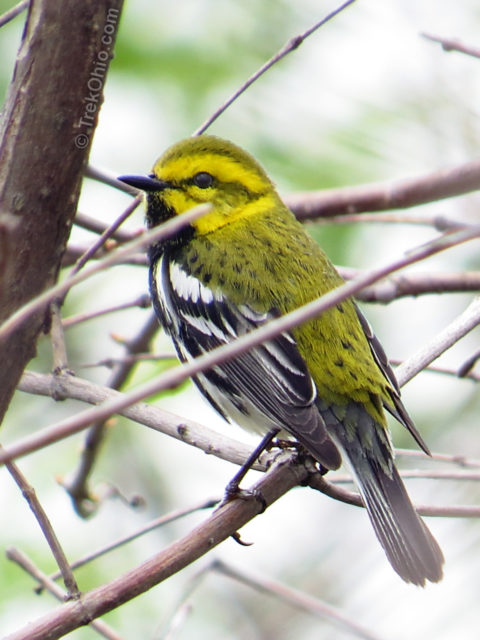
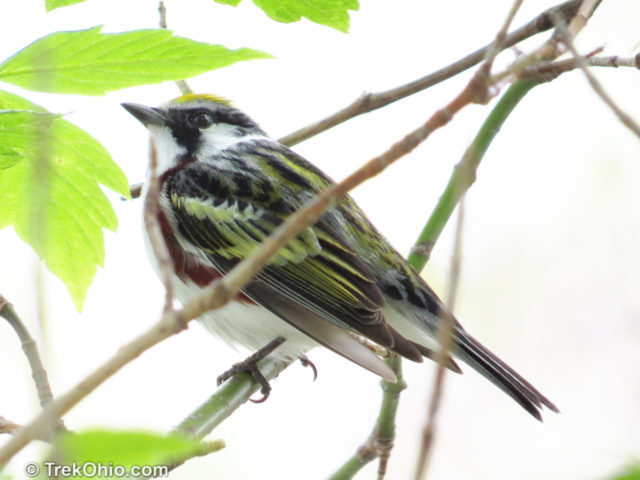
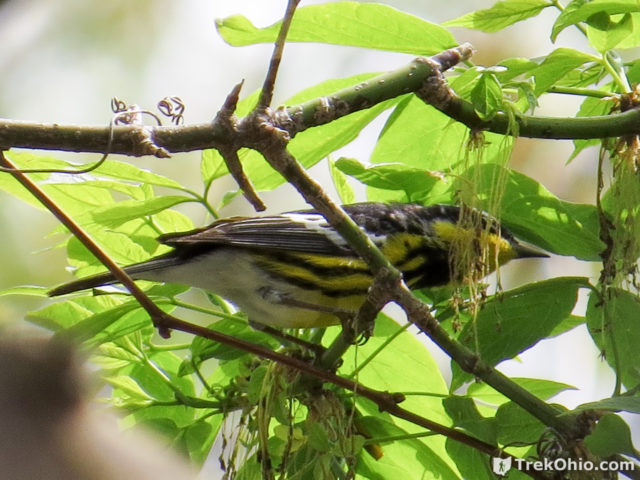
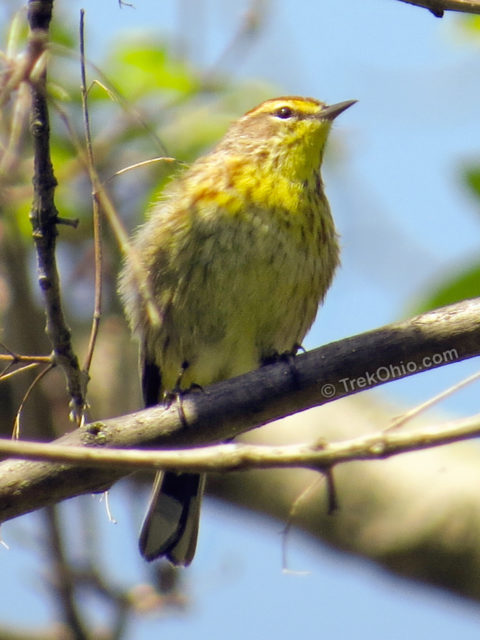
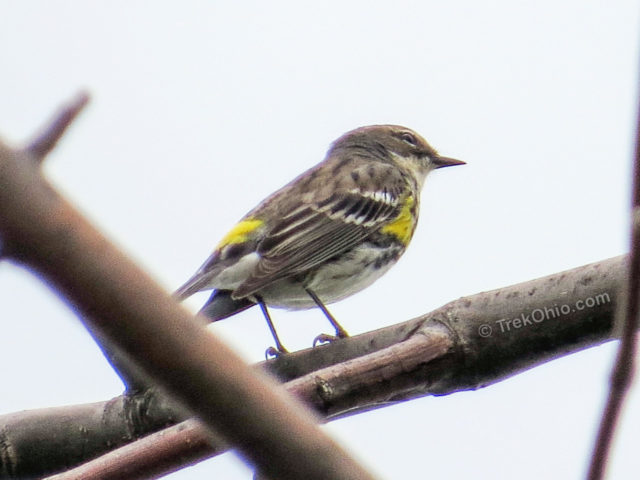
The Birds of Prey
The main attraction of the Biggest Week is the warbler migration. However, we can’t go to this area without being amazed at how many eagle nests there are. We saw three active nests at Magee Marsh, and we also saw another active nest at Ottawa Wildlife Refuge. Park staff erect barriers to keep people some distance from the active nests when the eagles build them near parking lots or trails. There were two nests at Magee Marsh near the area’s parking lots. But even from the other side of the barricade, we were much closer than usual to a nest and it was a thrill seeing the eagles and eaglets.
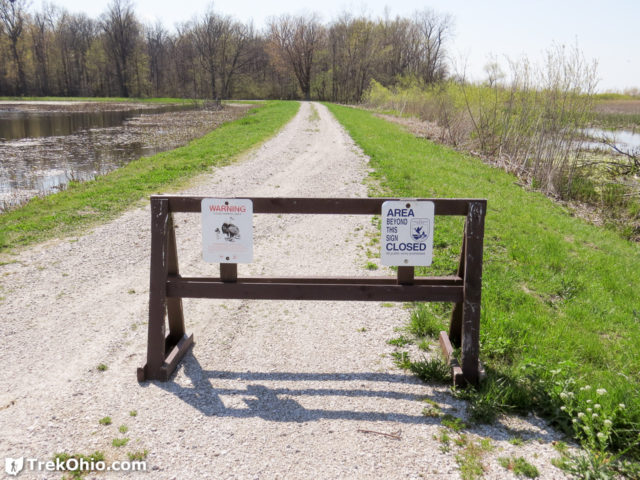
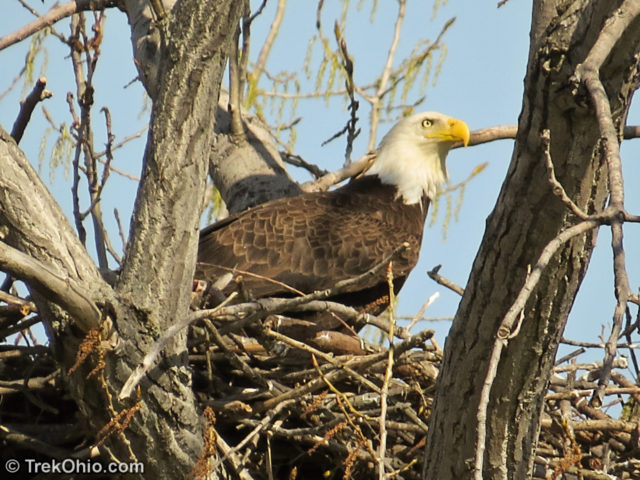
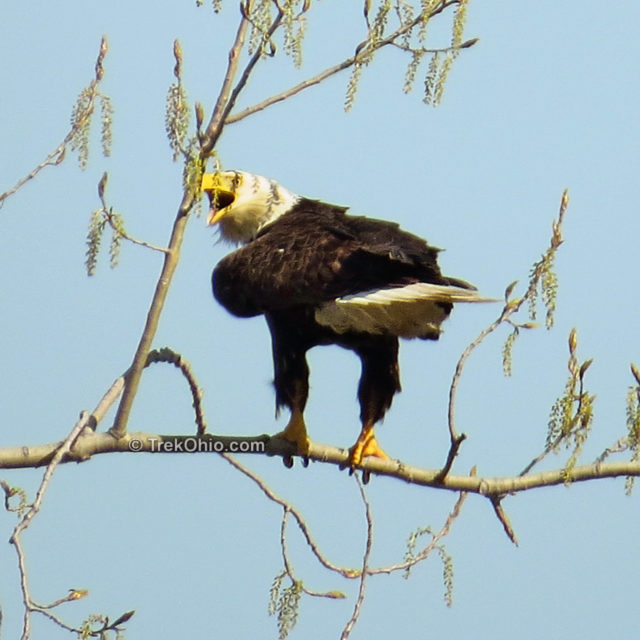
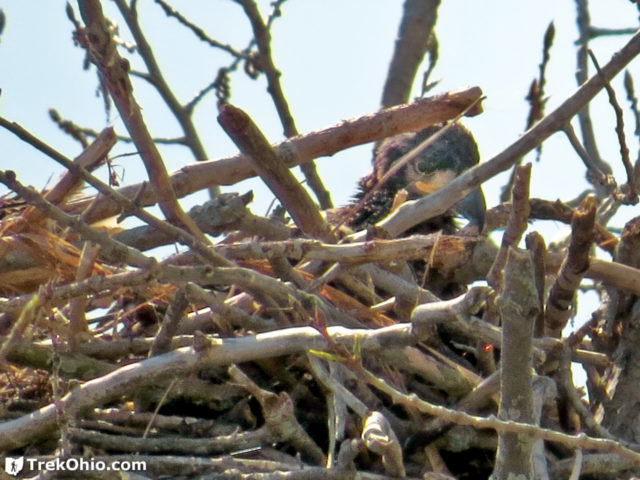
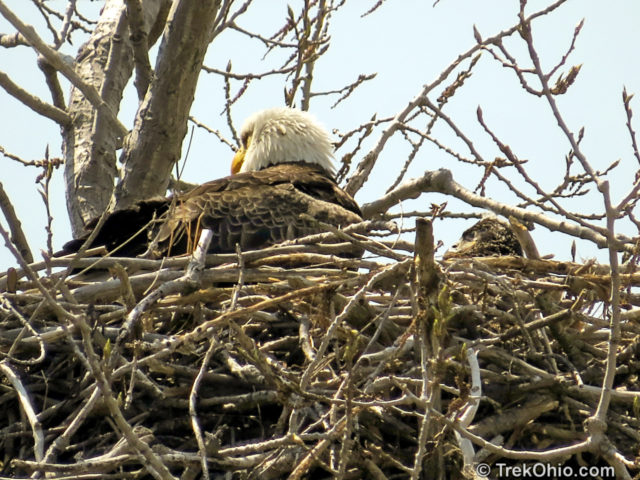
Were it not for helpful birders on the boardwalk at Magee Marsh, I would have totally missed seeing the young Great Horned owlet peeking out of his nesting cavity below.
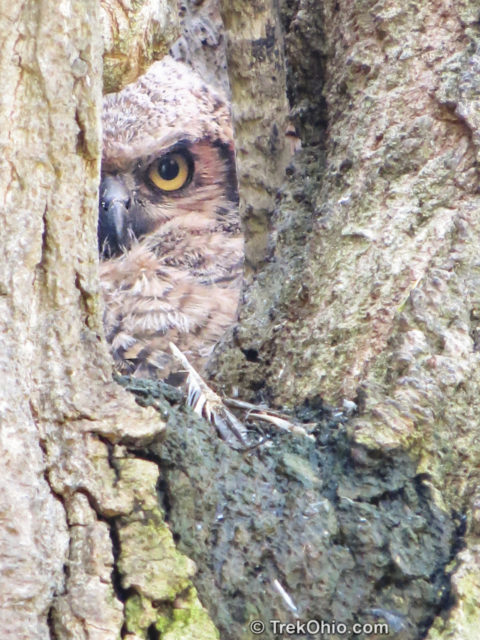
The Critters
We saw several muskrats while looking for birds, but in most of our photos they are fleeing. But not the bold little guy below. This muskrat was browsing vegetation about four feet away from the boardwalk at Magee Marsh while a crowd of people watched. He is unusual in having such light colored skin around his eyes and nose.
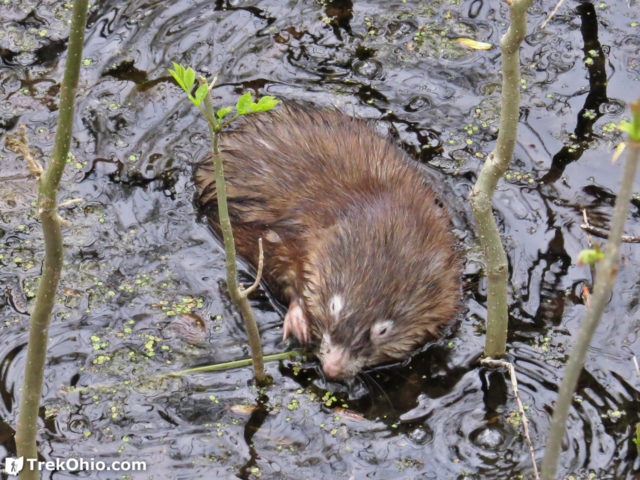
The turtle below were basking in the canals at the Ottawa Wildlife Refuge. We saw about a half dozen map turtles basking in the canals at the Ottawa Wildlife Refuge which was a treat because I don’t get to see this species often. We also saw many painted turtles.
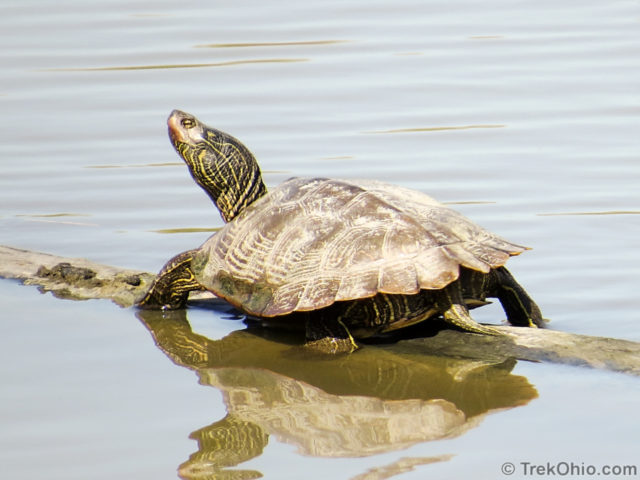

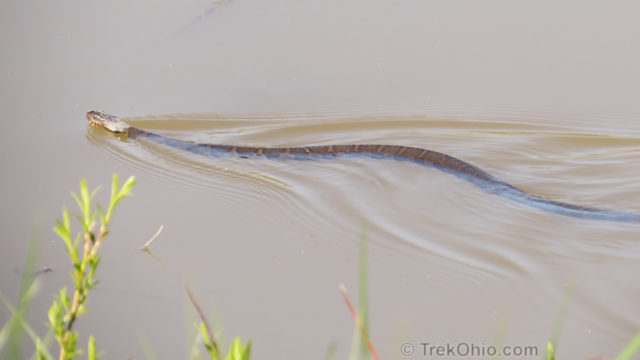
Wrapping Up
In general we saw the most birds at Magee Marsh. We saw the most critters at Ottawa Wildlife Refuge. Although Bob and I walked along the canals at the Ottawa Wildlife Refuge, it was also possible to ride through the park in the trailer pictured below. We also went to Toussaint Wildlife Refuge because a birder told us last year it offered an equally good opportunity to see the migrating birds, but without the crowds. However, all we saw were yellow warblers, trumpeters swans, downy woodpeckers, and egrets. But admittedly we are not great birders, so maybe more were there and we were just missing them. In addition the grassy trail at Toussaint was fairly overgrown, so that made it a little less pleasant too.
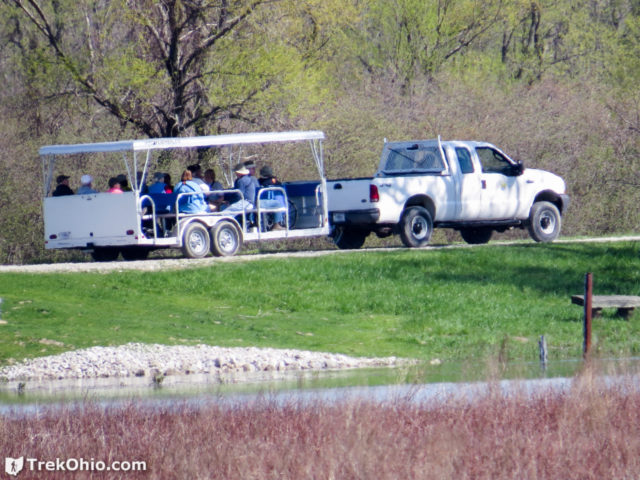
Our most amusing sighting of the day was at the Ottawa Wildlife Refuge. Besides the active eagle nest, I was using my telephoto lens to photograph a number of other eagles nests that appeared to be abandoned. But when I got home I discovered that one of the old eagle nests had been taken over by a Canada Goose! Admittedly the photo isn’t that great, but you can still make out the goose.
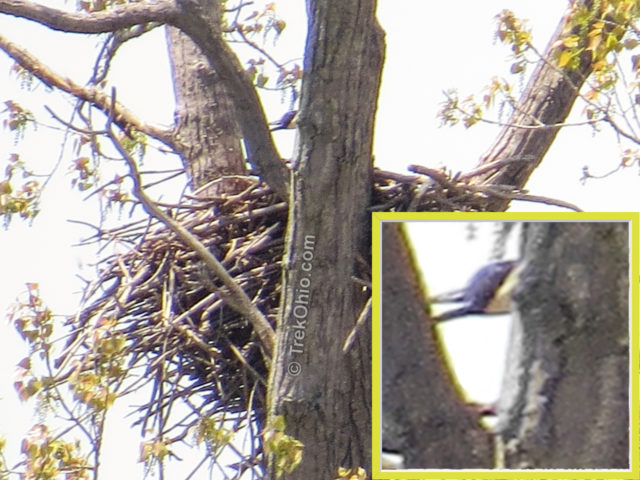
Additional information
- Official website: The Biggest Week in American Birding
- Facebook: The Biggest Week In American Birding
- TrekOhio: Birding Resources — Our collection of links to websites, articles, maps, and videos related to birding in Ohio. Points to information on birding hotspots, organizations, events, and more.
- TrekOhio: Magee Marsh Wildlife Area — Includes an embedded map showing notable features, plus you have the option of getting directions from Google.
- TrekOhio: Ottawa National Wildlife Refuge — includes an embedded Google map that you can use to get directions to the Visitor’s Center.
- TrekOhio: Ottawa County Parks & Nature Preserves — among other parks, this is the county where Ottawa Wildlife Refuge and the Toussaint Wildlife Area are located.
- TrekOhio: Lucas County Parks & Nature Preserves — Magee Marsh is located in Lucas and Ottawa counties
More on Birds
